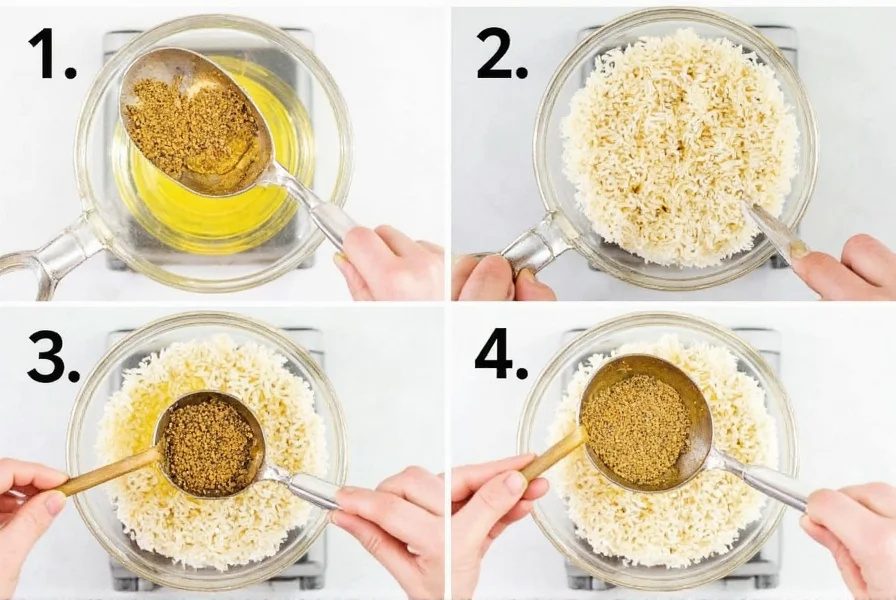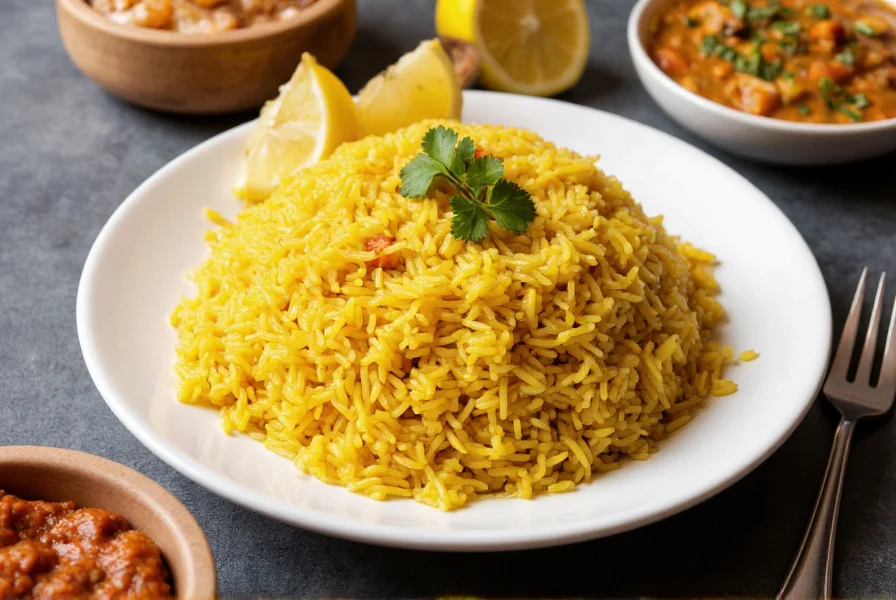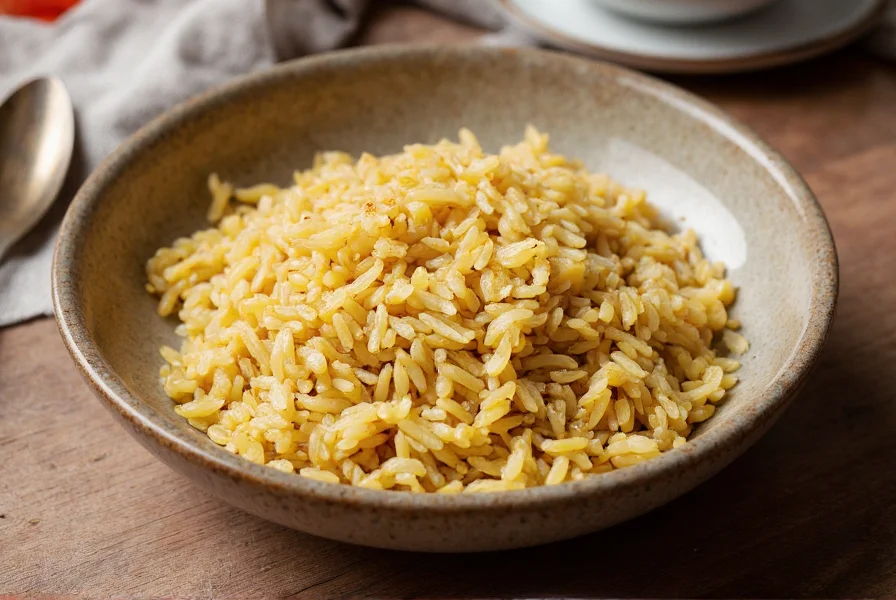Cumin rice, celebrated for its warm, earthy flavor profile, transforms simple ingredients into an extraordinary accompaniment that elevates any meal. This versatile dish—known as jeera rice in Indian cuisine—combines the nuttiness of basmati rice with the distinctive aroma of toasted cumin seeds. Whether served alongside curries, grilled meats, or as part of a festive meal, properly prepared cumin rice delivers a delicate balance of fragrance and texture that makes it a kitchen staple worldwide.
The Cultural Journey of Cumin Rice
Cumin rice traces its origins to ancient Indian culinary traditions, where cumin (jeera) has been used for thousands of years both as a spice and for medicinal purposes. The practice of tempering cumin seeds in hot oil before adding rice—called tadka—releases essential oils that infuse the entire dish with complex flavor. This technique spread through trade routes to Middle Eastern, Mediterranean, and Latin American cuisines, each region developing distinctive variations.
Why Cumin Transforms Ordinary Rice
Cumin seeds contain cuminaldehyde, the compound responsible for their distinctive warm, slightly peppery flavor with citrus undertones. When toasted properly, these seeds undergo the Maillard reaction, developing deeper, nuttier notes that penetrate the rice grains during cooking. Unlike pre-ground cumin, whole seeds maintain their essential oils until heated, delivering superior flavor intensity. This chemical process explains why toasting cumin seeds before cooking makes the critical difference between bland and exceptional cumin rice.
| Ingredient | Traditional Use | Modern Variation |
|---|---|---|
| Basmati rice | Soaked 30 minutes before cooking | Rinsed thoroughly until water runs clear |
| Cumin seeds | 1 tsp per cup of rice | 1.5 tsp for intensified flavor |
| Cooking liquid | Water only | Vegetable broth with lemon zest |
| Finishing touch | Fresh cilantro | Cilantro + toasted slivered almonds |
Mastering the Perfect Cumin Rice Recipe
Creating restaurant-quality cumin rice at home requires attention to three critical elements: rice preparation, cumin toasting technique, and water ratio. Start with high-quality basmati rice, which contains the ideal starch composition for fluffy results. Soaking the rice for 30 minutes reduces cooking time and prevents breakage. The key to authentic Indian cumin rice lies in the tempering process—heat oil until shimmering, add cumin seeds, and cook just until they darken slightly and release their aroma (about 30 seconds). Over-toasting creates bitterness, while under-toasting leaves the flavor muted.

Avoiding Common Cumin Rice Mistakes
Even experienced cooks encounter issues with cumin rice. Sticky rice typically results from improper rinsing or incorrect water ratios. For perfect texture, use a 1:1.5 rice-to-water ratio for soaked basmati. If your cumin rice turns out mushy, you've likely used too much water or disturbed the rice during cooking. Always let the rice steam off-heat for 10 minutes after the water absorbs—this crucial resting period allows starches to set properly. For easy cumin rice side dish success, avoid lifting the lid during cooking, which releases essential steam.
Global Variations Worth Exploring
While Indian jeera rice remains the most recognized version, cumin rice appears in diverse forms worldwide. Mexican arroz con comino often includes tomatoes and garlic, creating a vibrant reddish hue. Middle Eastern versions incorporate cardamom and cinnamon for added complexity. In Spain, cumin occasionally appears in certain regional rice dishes, though saffron remains dominant. These variations of cumin rice around the world demonstrate how a single spice can adapt to different culinary traditions while maintaining its distinctive character.
Nutritional Benefits Beyond Flavor
Cumin offers impressive health benefits that enhance cumin rice's nutritional profile. Rich in iron, antioxidants, and compounds that aid digestion, cumin complements rice's energy-providing carbohydrates. Studies suggest cumin may improve insulin sensitivity and reduce inflammation. When prepared with minimal oil and served with vegetable-rich accompaniments, cumin rice becomes a balanced component of a healthy diet. The health benefits of cumin in rice make this simple dish both delicious and nutritionally valuable.
Advanced Techniques for Culinary Excellence
For exceptional results, consider these professional techniques. Toasting the rice with cumin seeds in oil for 2-3 minutes before adding liquid creates a subtle nuttiness throughout the grains. Some chefs add a piece of cinnamon stick or a few cardamom pods during cooking for nuanced complexity. For restaurant-style presentation, fluff the rice with a fork rather than stirring, preserving individual grain integrity. When serving, sprinkle with fresh cilantro and a squeeze of lime to brighten the earthy cumin notes. These cumin rice cooking tips transform a basic side into a memorable culinary element.

Storage and Reheating for Optimal Flavor
Proper storage maintains cumin rice's quality for future meals. Cool completely before refrigerating in an airtight container—this prevents moisture buildup that causes sogginess. For best results, consume within 3 days. When reheating, add 1-2 tablespoons of water per cup of rice and cover tightly to recreate steaming conditions. Microwave in 30-second intervals, fluffing between sessions. Avoid reheating multiple times, as this degrades texture. These cumin rice storage tips ensure your leftovers taste nearly as good as freshly made.
Frequently Asked Questions
What's the difference between cumin rice and jeera rice?
Cumin rice and jeera rice are the same dish—"jeera" is simply the Hindi word for cumin. Authentic jeera rice specifically refers to the Indian preparation method using basmati rice and whole cumin seeds tempered in oil. Some regional variations might include additional spices, but the core preparation remains consistent.
Can I use ground cumin instead of cumin seeds?
While possible, ground cumin won't deliver the same flavor profile as whole seeds. Whole seeds release essential oils gradually during cooking, creating a more complex, nuanced flavor. If substituting, use 1/4 teaspoon ground cumin per teaspoon of seeds, but add it later in the cooking process to prevent bitterness from over-toasting.
Why does my cumin rice turn out sticky?
Sticky cumin rice usually results from improper rinsing or incorrect water ratio. Basmati rice must be rinsed thoroughly until the water runs clear to remove excess surface starch. Use a 1:1.5 ratio of soaked rice to water. Avoid stirring during cooking, as this releases more starch. Let the rice rest off-heat for 10 minutes after cooking to allow proper steam absorption.
What's the best rice for cumin rice?
Long-grain basmati rice is ideal for cumin rice due to its delicate fragrance, slender grains, and low starch content that produces fluffy results. Aged basmati (1-2 years) works best as it has reduced moisture content. While jasmine rice can substitute, it has a stronger floral aroma that competes with cumin's earthiness.
How can I add more flavor to basic cumin rice?
Enhance basic cumin rice by adding a cinnamon stick, 2-3 cardamom pods, or a bay leaf during cooking. For brightness, finish with fresh lime juice and cilantro. Some variations include toasted slivered almonds or golden raisins for texture contrast. For deeper flavor, cook the rice in vegetable broth instead of water, or add a pinch of turmeric for color.











 浙公网安备
33010002000092号
浙公网安备
33010002000092号 浙B2-20120091-4
浙B2-20120091-4